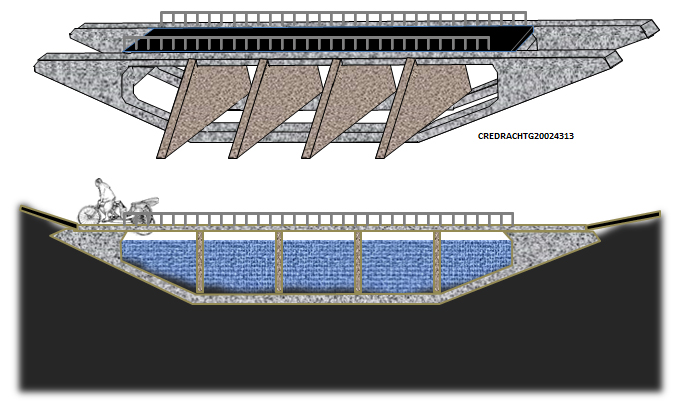 What is the need of this?
What is the need of this?
Rural villagers are moreover isolated and suffering without access to the township and governments cannot afford building of bridges in such difficult areas due to high cost and difficulty in transporting pre-stressed concrete beams.
Any crossing should not heavily disturb the river flow and also, the local working groups cannot excavate the river bed deep up to the bed rock to construct load bearing pillars.
There rises the need for an appropriate bridge technology of less laborious and low cost.
What is innovative there?
Normally load bearing beams are supported by several pillars in the so far developed background art of bridge construction. Surcharge + moving loads upon the bridge is transferred in to the bed soil by point bearings (supports or pillars)
But in this technique, the load bearing beam itself rests in the riverbed to transfer the load in to the bed soil as a surcharge bearing. Meanwhile the water is allowed to flow through openings provided in the beam itself.
Therefore this structure is named as a ‘Surcharge Bearing Immersed Bridge’. Floating debris are not heavily disturbed by the structure because the trapezoidal shaped walls facilitate to turn the debris so that they pass through the bridge easily.
Advantageous effects?
-
Advantageous effects?
1. Construction is not much complicate, and a local working group can do it step by step without hiring costly machineries
2. The upper part of the two load bearing beams and the top deck can be constructed while the river is flowing through without any disturbance
3. The construction is less laborious and comparably of low cost and could be recommended for local government authorities to be used under road infrastructure development in difficult rural areas.
